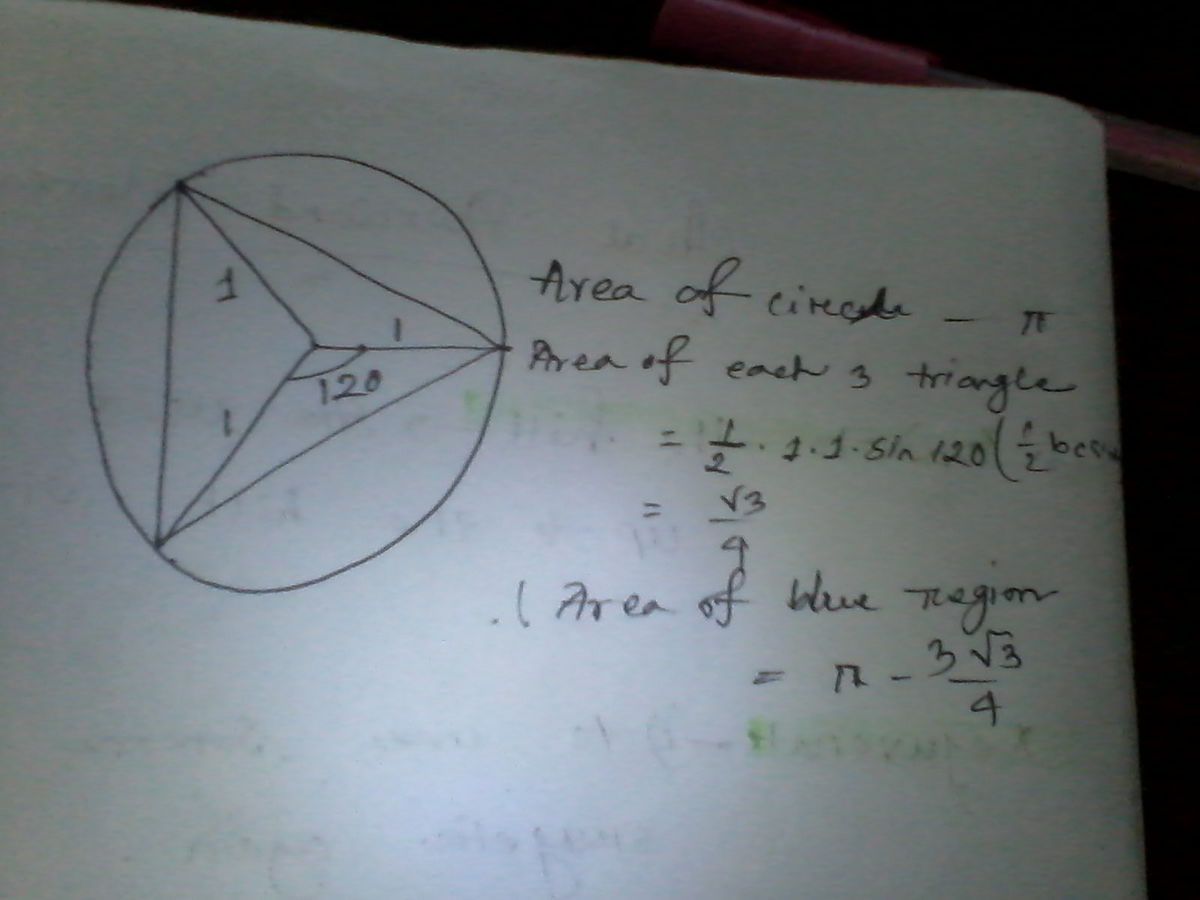Triangle In Circle
 In a circle of radius 1, an equilateral triangle is inscribed in the circle as drawn. What is the area of the blue region?
In a circle of radius 1, an equilateral triangle is inscribed in the circle as drawn. What is the area of the blue region?
This section requires Javascript.
You are seeing this because something didn't load right. We suggest you, (a) try
refreshing the page, (b) enabling javascript if it is disabled on your browser and,
finally, (c)
loading the
non-javascript version of this page
. We're sorry about the hassle.
6 solutions
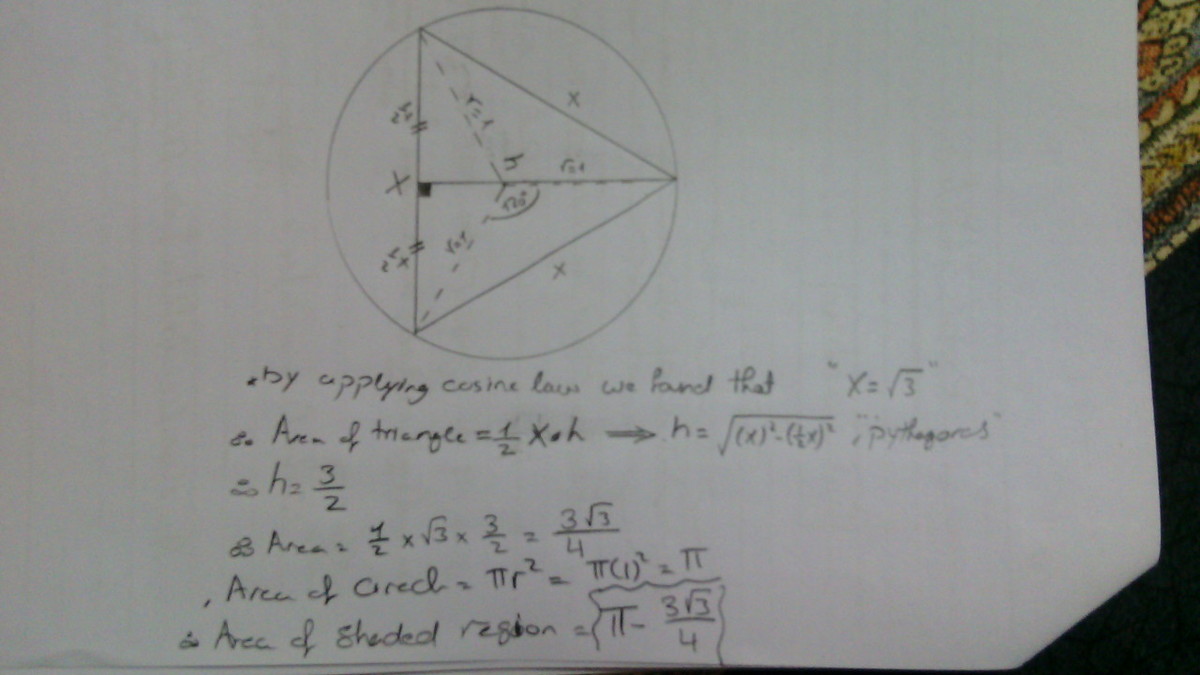
I like your solution - I used a combination of sine & Pythagoras to work out length of X.
Join the center of the circle to each vertex of the triangle
Now , the red triangle consists of three congruent isosceles triangles.
Each isosceles triangle has two arms each of them equals the radius of the circle
and vertex angle 120
Area of each isosceles triangle = (1/2)(r^2) sin 120 = (1/4) (square root of 3)
Area of the red triangle = (3/4)(square root of 3)
Area of the circle = Pi
Then area of the blue region = Pi - (3/4)(square root of 3)
I used the fact that the circumcentre, centroid and orthocentre of an equilateral triangle are the same point, so the radius is 2/3 of the perpendicular height. Now using trigonometry t a n 6 0 = 3 = x 2 3 ⇒ x = 2 1 3 ∴ b l u e a r e a = π − ( 2 3 × 2 1 3 ) = π − 4 3 3
Ah, using that 2/3 of height makes the length calculation much more direct. Nice way of looking at it.
I like your solution most.Thank u.
This was the second problem I did today about equilateral triangles that are inside a circle. I didn´t want to solve it with trig functions so I used only algebra and some triangle properties. So I derived a general formula and then replaced the radius variable with 1.
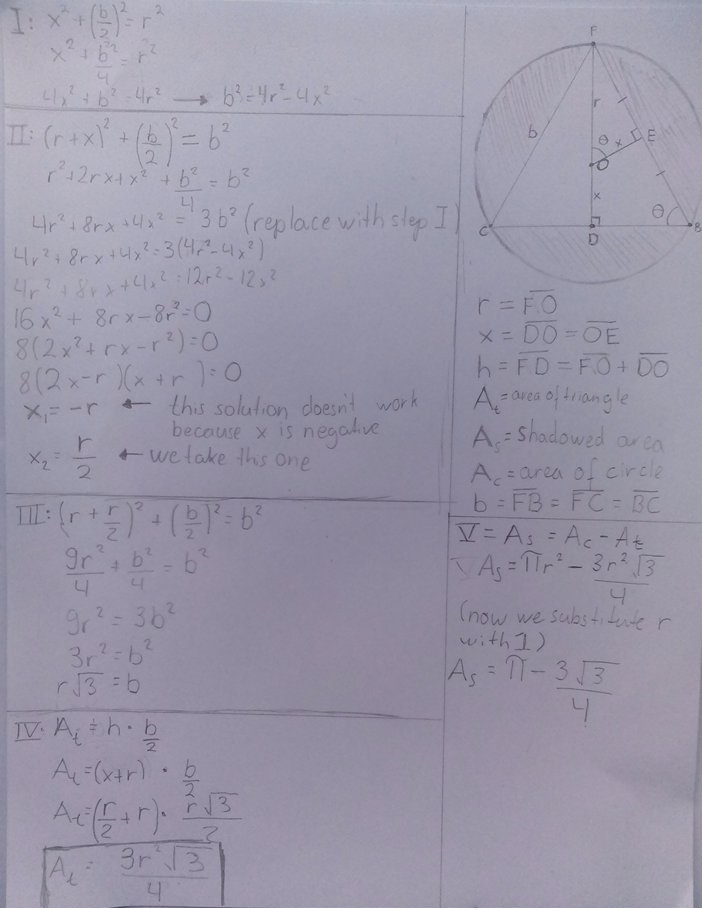
NO TRIGNOMETRY NEEDED
HERON'S FORMULA:-http://en.wikipedia.org/wiki/Heron%27s_formula
NOTE :- The third vertex of the triangle is C.
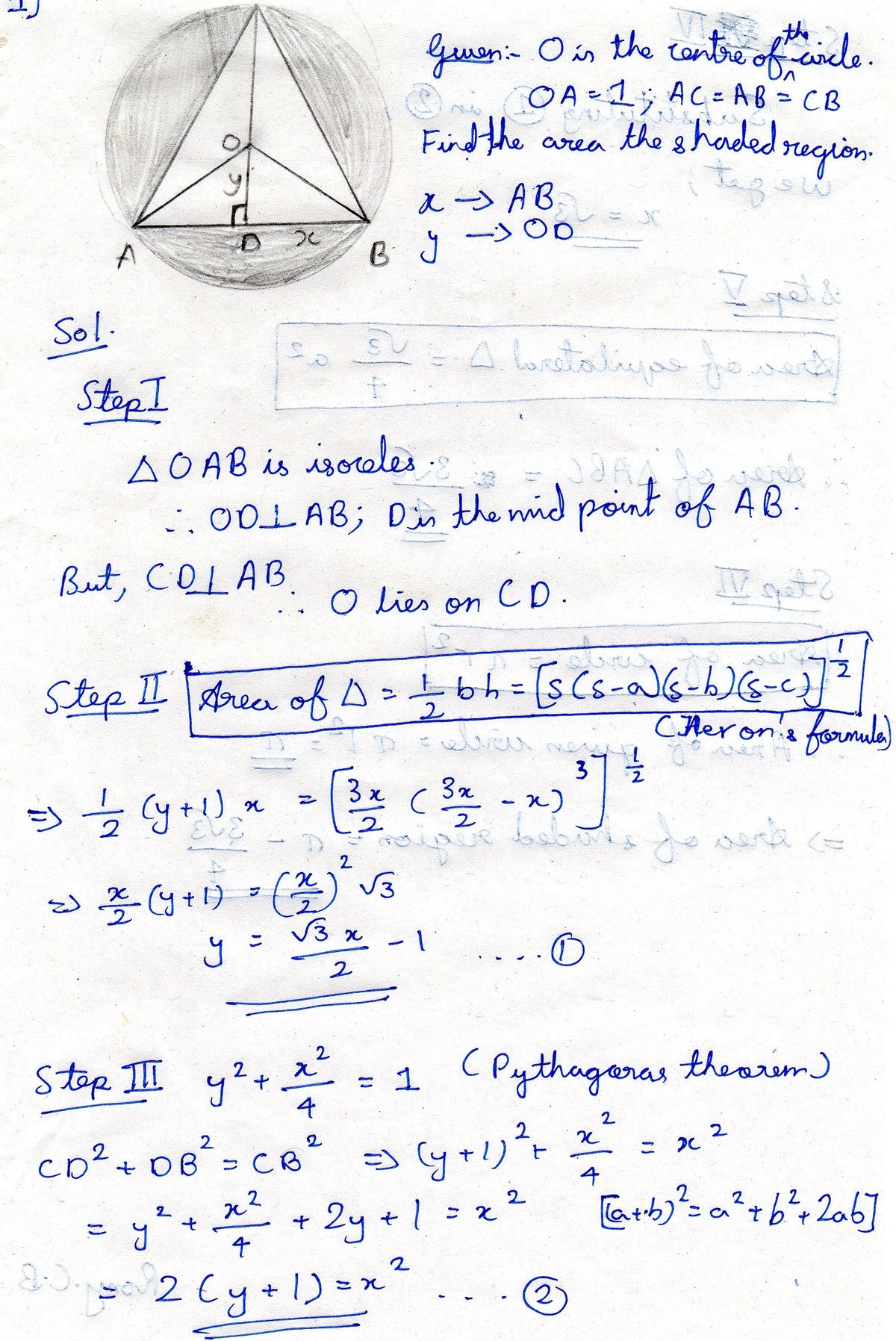
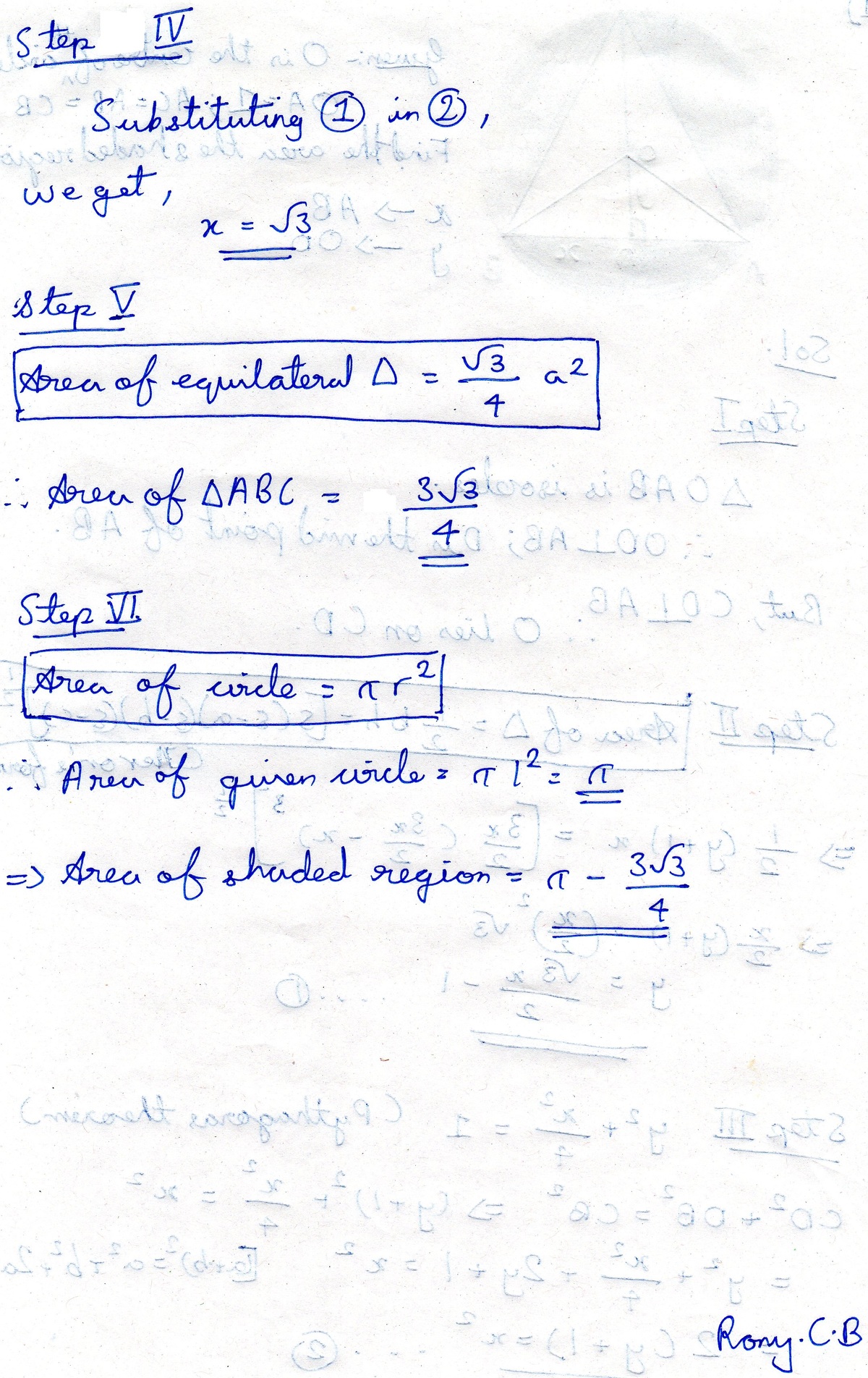
Nice detailed solution! Thanks for sharing :)
